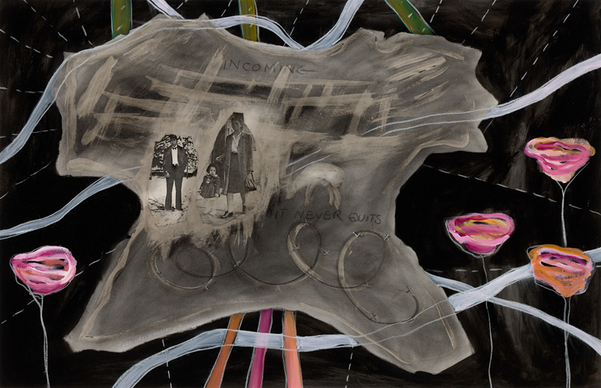Madweyàshkà | Like a Wave
By Olivia Kristoff, curator
Like a wave, the experiences of Indigenous people in Canada can feel like a constant rise and fall. Land disputes, intergenerational trauma, the shadow of residential schools, political unrest and racism have permeated people’s lives. Through these, Indigenous artists have found a way to use art to address what has been taken.
While contemporary Indigenous art was once collected in ethnographic museums to further solidify the narrative of the “disappearing Indian,” artists have since refused to be reduced to the past and instead created their own methods of contributing to the contemporary art world. Art has become a tool of healing, a way of sharing stories and challenging perspectives by advancing Indigenous peoples’ knowledge on their own terms.

Photographer(s): Brandon Clarida Image Services.
Madweyàshkà |Like a Wave explores contemporary Indigenous works of art from the 1970s to the 2010s that break boundaries of time, place and circumstance, and considers the way galleries have become sites of resistance.
Positioning Indigenous thought systems at the forefront gives viewers an inclusive perspective on the history of Canada. There is much conversation around the methods of indigenizing cultural spaces. As defined by Ruth B. Phillips in Museum Pieces: Toward the Indigenization of Canadian Museums, to Indigenize is to incorporate into the mainstream world the concepts, protocols and processes that originate in Indigenous societies.
Definitions of “art” are vastly different for Indigenous people—there is a refusal to conform to Western definitions, which in turn has allowed artists to deny the need to be recognized or affirmed by the colonizer. The traditional colonial view did not see Indigenous cultural production in the same strata as Euro-Canadian production. In Madweyàshkà |Like a Wave, viewers can examine the evolution of the collage medium in contemporary Indigenous art as unassuming rebellion against that system.
Language as a theme also features prominently in works by the artists featured in Madweyàshkà | Like a Wave, evoking not only the history of language banning in residential schools, but language rebirth as a pillar of cultural resurgence and strength that continues to grow.
In looking at pieces with connections to the past, viewers can see a contemporary art narrative that reflects waves of Indigenous resilience over decades and cultural resurgence rooted in traditional knowledge systems.
Through this exhibition, viewers can experience the transfer of teachings through generations, through the artwork of Indigenous artists. Like the passing down of traditional knowledge, these artists have influenced and inspired each other in their respective times and spaces, giving new voices to the images that have shaped their realities.
Working against the Western biases around the definition of “culture,” these artists change the perception of what can be a hierarchical and colonial structure within Canadian institutions. The very presence of Indigenous artists in what have often been Eurocentric spaces challenges the Western status quo and lets viewers ask the question: whose voices do we hear when we step into a gallery?
"Incorporating connections between the past and the present, this collection of pieces positions Indigenous views on the shared experiences of Indigenous people in Canada. The past has shaped who Indigenous people are, and intergenerational trauma affects how they see themselves and how they see the world."
It is impossible to separate two worlds—Western ways of knowing have been tangled with Indigenous ones through several centuries of co-habitation and colonialism. Here, a complex and nuanced story is being told.
Including works from Barry Ace, Carl Beam, Joane Cardinal-Schubert, Rosalie Favell, Greg A. Hill, Robert Houle, Nadia Myre, David Neel, Shelley Niro, Edward Poitras, Jane Ash Poitras, Michael Robinson and Jeff Thomas, Madweyàshkà | Like a Wave brings together pieces that challenge the Western gaze and reframe the perception of what art by Indigenous artists can be.


